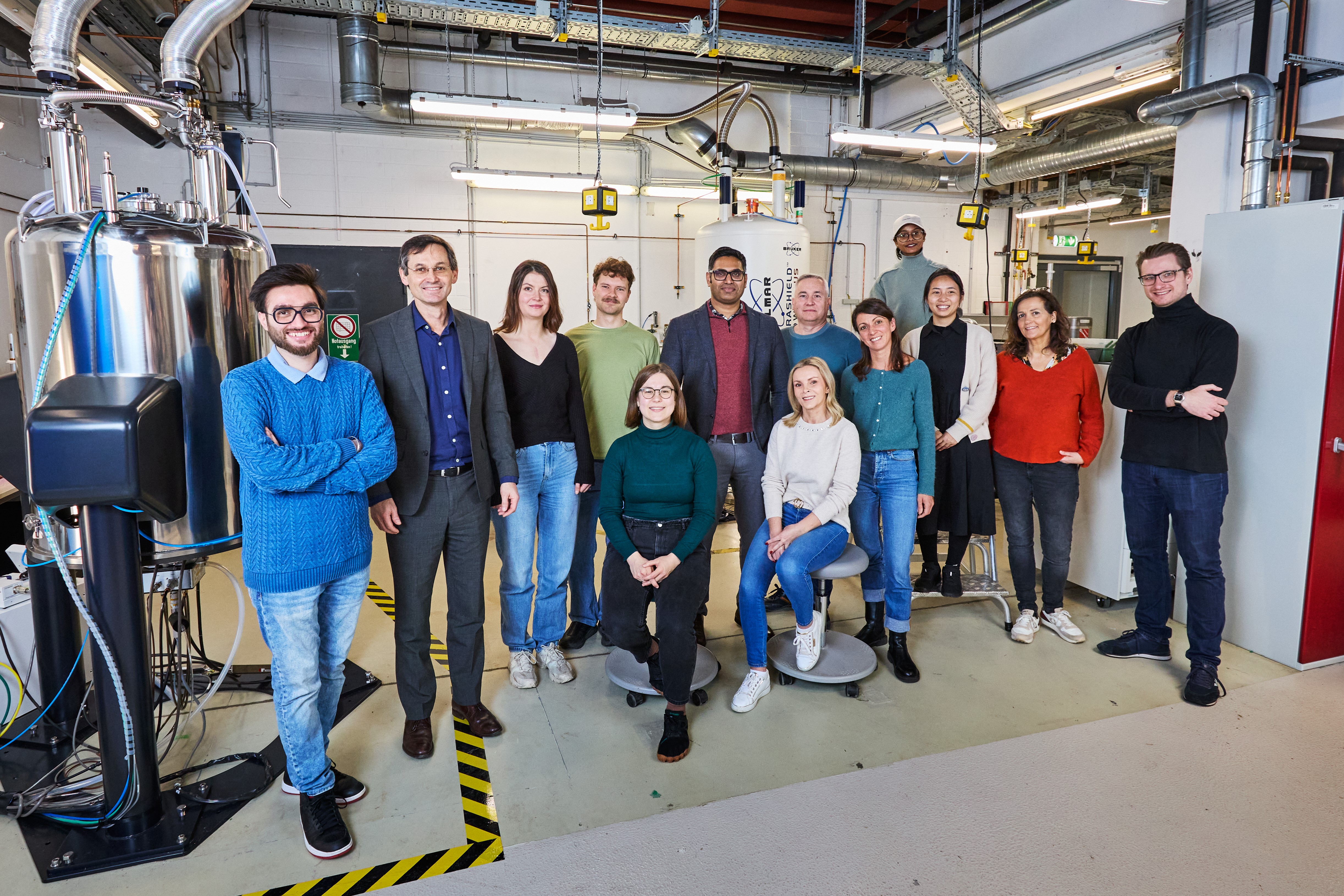Magnetic Resonance Automation MRA
Prof. Dr. Marcel Utz [Contact]
Welcome...
...to the Utz lab! We use microtechnology to better understand complex systems, from advanced materials such as photovoltaics and organic semiconductors all the way to biological systems such as cells and tissues. Microtechnology provides the tools to create controlled environments in which we can study specific aspects of their behaviour, but also allows us to develop novel tools and sensors for investigation. A major part of our activities focuses on integrating magnetic resonance techniques with microfluidic lab-on-a-chip systems. This involves the development of specialized magnetic resonance sensors, pulse sequences, and data extraction strategies.

Micro-Magnetic Resonance
Magnetic resonance spectroscopy and imaging are ideal tools that provide detailed information on chemical structure, dynamics, and processes in live systems. We are working on novel ways of integrating magnetic resonance with microfluidic systems that enable continuous extraction of large amounts of spectroscopic data. The main emphasis lies on doing this in situ and in operando; we aim to learn from complex systems in their living and active state, irrespective of whether we are dealing with man-made, engineered systems or with biological ones.
Magnetic resonance relies on the interaction of the atomic nuclei with magnetic fields. Due to the relatively small magnetic moments of the nuclei, these interactions are weak, and tend to produce only weak signals which must be carefully protected from being drowned by thermal noise. To accomplish this, we develop miniaturized magnetic resonance detectors which can be adapted to specific situations. An important part of our activities is the integration of such detectors with microfluidic lab-on-a-chip systems in which cells can be cultivated.
Magnetic Resonance Automation MRA
Magnetic resonance can provide rich data on live systems, reporting in a comprehensive way on chemical processes, metabolism, and transport phenomena. Our aim is to make use of these capabilities in automated laboratory systems, where the data obtained can be directly fed back into the experimental loop. In time, we hope this will give rise to “self-driving labs”, which can solve scientific and technological problems with only minimal manual input. To this effect, we are developing fully automated systems for sample handling, spectrometer tuning and setup, as well as for data acquisition and interpretation. We incorporate recent advancements in the fields of robotics, machine learning, and of course magnetic resonance spectroscopy to this effect.

